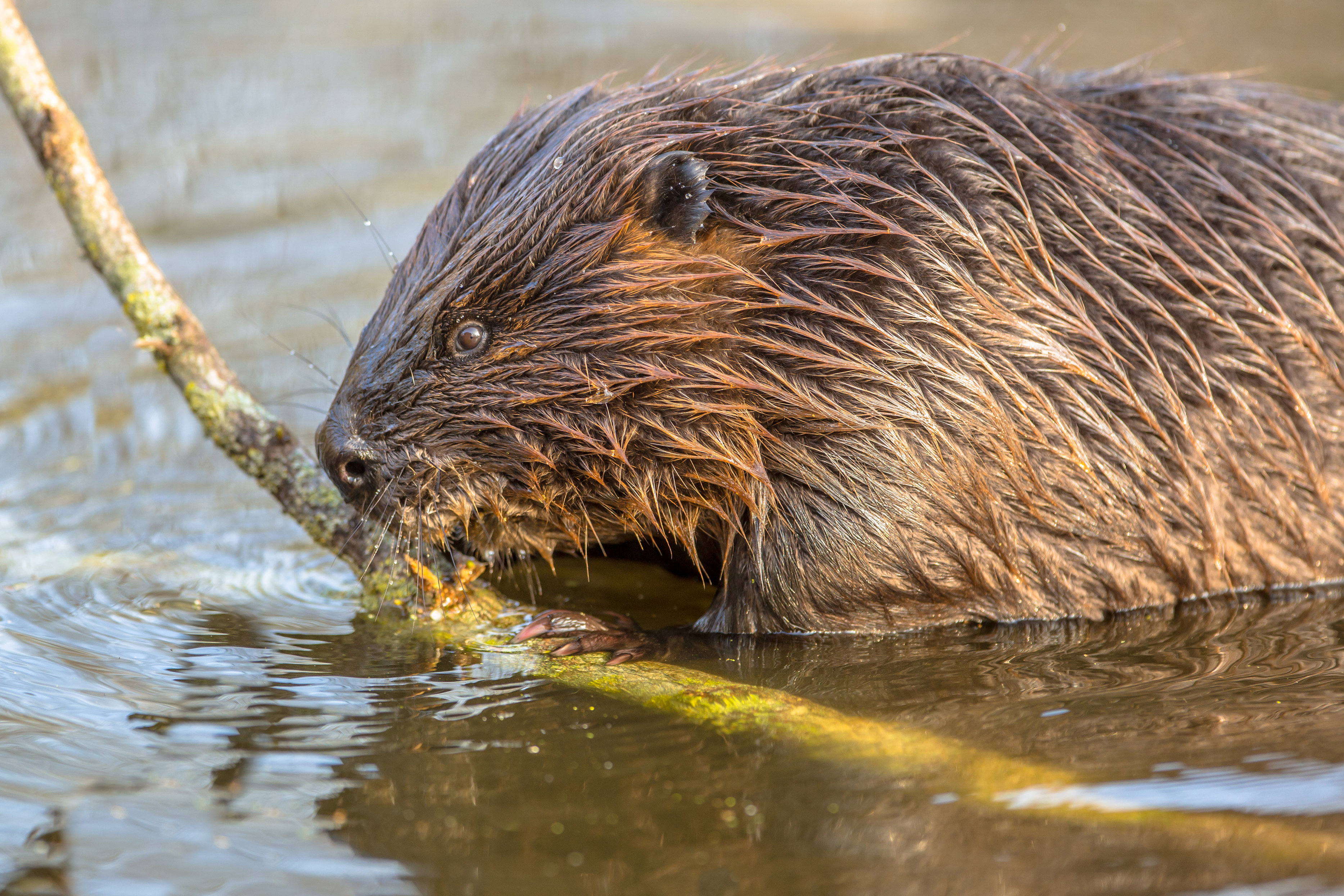International Beaver Day

International Beaver Day is a day to spotlight beavers as the amazing, transformative keystone species they are.
Beavers are the second largest rodent in the world, second only to capybara. They are inquisitive, playful and affectionate, yet can defend themselves if they feel threatened. They are social and peaceful animals with a strong family structure, but can be territorial where beavers outside of their family structure are concerned. Beavers are monogamous and usually mate for life. They typically birth between one to eight kits between May and June – the amount being dependent on the scarcity of food and the mother’s age.
Beavers weigh up to 30kg – roughly the weight of a Labrador – and have a lung capacity roughly three times that of humans, which means they can hold their breath underwater for up to 15 minutes at a time! They have a large, flat, scaly tail mainly used as a rudder when swimming. They also use this tail to slap the surface of the water, deterring predators and warning other beavers there may be danger. Their large, distinctive orange front teeth are reinforced with iron, allowing them to gnaw through wood. They are entirely herbivorous, eating a mixture of shoots, leaves, bark and aquatic plants. Their favourite tree species are aspen and willow.
When we think of beavers, most of us picture the Rocky Mountains of North America, yet beavers are actually native to the UK, hunted to extinction in the 17th Century for both their pelts and castoreum. Castoreum is a yellow, oily substance created in the scent glands of beavers, which has been used for thousands of years in perfume, food and medicine.
Beavers are often referred to as “ecosystem engineers” as their tree coppicing, dam creation and channel digging creates wetland landscapes that are dynamic and bring huge benefits to other mammals, as well as being amazing at sequestering carbon, which is more important than ever given high atmospheric CO2 levels and the very real concern of climate change. Their tree coppicing results in the formation of new stem and root systems, which can extend the life of some species, and result in the strengthening of riverbanks. Their selective felling opens up the woodland canopy, allowing light to reach both the ground – enabling the regeneration of understorey vegetation and increasing feeding opportunities for birds and bats – and water bodies – raising water temperature and potentially creating different habitats. Felled deadwood also provides both habitat and shelter for a variety of different flora and also results in more dynamic watercourses.
It is a common misconception, particularly within British agriculture, that beavers cause flooding.
This misconception was – in part – born to justify their hunting for fur and castoreum in the 17th Century. There are many recent case studies that show entirely the opposite: the damming of streams creates a series of pools that both slow and divert water, meaning more can be absorbed by the land. In periods of high rainfall this may mean the difference between an area flooding and not flooding. Not only does it reduce the risk of flooding, the water capture and gradual release also reduces the risk of drought in dry periods.
March 2025 saw the first wild release of beavers in the UK in recent history. The change in law that made this possible is something that the Wildlife Trusts and conservationists have been campaigning for for many years. A family of four beavers was released on the banks of a lake in Purbeck, Dorset, having been relocated by the Beaver Trust from the River Tay in Scotland.
Is there a future for a family of beavers at Elmore? Watch this space. For now, Happy International Beaver Day!
by Briony Cobb, Nature, Ecology & Wellness Guardian
Image credit: CreativeNature_nl



